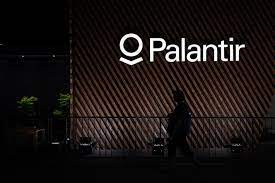Funds & The Funding Gap (Part 1 of 2)
by Michael Schmanske
Most successful startup founders have, or will become familiar with, the idea of the “Funding Gap”. It’s not complicated, but if you are an entrepreneur and are not familiar with the term you are either very lucky or still too early to know what’s about to happen to you. Even writing this, I am wracked by mixed feelings of envy and pity for you. I am going to break down the general funding round names and characteristics in this post, then discuss the gap in the next.
Simply put, company funding moves in phases:
Self-funded: The company operates on owners’ capital, sweat equity and/or some mix of research grants and or institutional support.
Friends and Family: Your Mom, Best Man at your Wedding, College besties, and working peers that respect and know you stepped up to help get the company off the ground. They believe in You, so they believe in your Vision.
Seed Stage: The first Stranger Funding Round. It’s somewhat murky as to what and when qualify as F&F and Seed, but “Here be Angels.” With some initial milestones met, you head out to find your first “Real” investors. They don’t know you and they are involved to vet your product and company.
Series A: The first institutional or quasi-institutional money. More milestones have been met and to take you to the next level you need some bigger checks to scale, polish and commercialize.
Series B: More track record, more milestones. You might be in-market or generating revenue. If you are a speculative product, like an oncology therapeutic, you’re probably at Phase 2 trials, but at the very least you have strong visibility to an exit; and your earnings/exit projections are based on reality not imagination.
Yada, yada, yada. Rounds C, D, pre-IPO, IPO, etc…
What is the most difficult stage?
Trick question: it’s actually a blend of two, Seed through Early Series A. From a credibility standpoint it makes sense. You are transitioning from faith and belief to hard facts and delivered outcomes. Angel investors live on faith and belief which is why they live in that zone.
That sounds great and it is the reason most experts or consultants in Private Equity give for the gap. But that is dismissive of the REAL reason the funding gap exists. Because of the structure of the Institutional Asset Management profession, there is little appetite for $250,000 to $2,500,000 checks. Most of those sizes come from family offices and high net worth individuals. (We will get to them shortly.)
ASIDE: Family Offices are groups of one or more wealthy families that manage their assets like an established hedge fund or other Asset Manager. They probably support a series of trust funds and/or charities. Think about the Waltons from WalMart, the Koch Brothers, or Mark Zuckerberg’s private accounts. Now scale down to the local property developer or Mall owner. Family Offices may be anywhere in the range of $50 million to $5 billion AUM (assets under management). Even that range is somewhat arbitrary. They are different from private endowments or foundations primarily in their internal structure. They usually answer to a small board of family members, or an individual, rather than a larger group of more conservative executors who themselves normally hire an external consultant for plausible deniability if an investment goes south.
by Michael Schmanske
Most successful startup founders have, or will become familiar with, the idea of the “Funding Gap”. It’s not complicated, but if you are an entrepreneur and are not familiar with the term you are either very lucky or still too early to know what’s about to happen to you. Even writing this, I am wracked by mixed feelings of envy and pity for you. I am going to break down the general funding round names and characteristics in this post, then discuss the gap in the next.
Simply put, company funding moves in phases:
Self-funded: The company operates on owners’ capital, sweat equity and/or some mix of research grants and or institutional support.
Friends and Family: Your Mom, Best Man at your Wedding, College besties, and working peers that respect and know you stepped up to help get the company off the ground. They believe in You, so they believe in your Vision.
Seed Stage: The first Stranger Funding Round. It’s somewhat murky as to what and when qualify as F&F and Seed, but “Here be Angels.” With some initial milestones met, you head out to find your first “Real” investors. They don’t know you and they are involved to vet your product and company.
Series A: The first institutional or quasi-institutional money. More milestones have been met and to take you to the next level you need some bigger checks to scale, polish and commercialize.
Series B: More track record, more milestones. You might be in-market or generating revenue. If you are a speculative product, like an oncology therapeutic, you’re probably at Phase 2 trials, but at the very least you have strong visibility to an exit; and your earnings/exit projections are based on reality not imagination.
Yada, yada, yada. Rounds C, D, pre-IPO, IPO, etc…
What is the most difficult stage?
Trick question: it’s actually a blend of two, Seed through Early Series A. From a credibility standpoint it makes sense. You are transitioning from faith and belief to hard facts and delivered outcomes. Angel investors live on faith and belief which is why they live in that zone.
That sounds great and it is the reason most experts or consultants in Private Equity give for the gap. But that is dismissive of the REAL reason the funding gap exists. Because of the structure of the Institutional Asset Management profession, there is little appetite for $250,000 to $2,500,000 checks. Most of those sizes come from family offices and high net worth individuals. (We will get to them shortly.)
ASIDE: Family Offices are groups of one or more wealthy families that manage their assets like an established hedge fund or other Asset Manager. They probably support a series of trust funds and/or charities. Think about the Waltons from WalMart, the Koch Brothers, or Mark Zuckerberg’s private accounts. Now scale down to the local property developer or Mall owner. Family Offices may be anywhere in the range of $50 million to $5 billion AUM (assets under management). Even that range is somewhat arbitrary. They are different from private endowments or foundations primarily in their internal structure. They usually answer to a small board of family members, or an individual, rather than a larger group of more conservative executors who themselves normally hire an external consultant for plausible deniability if an investment goes south.



